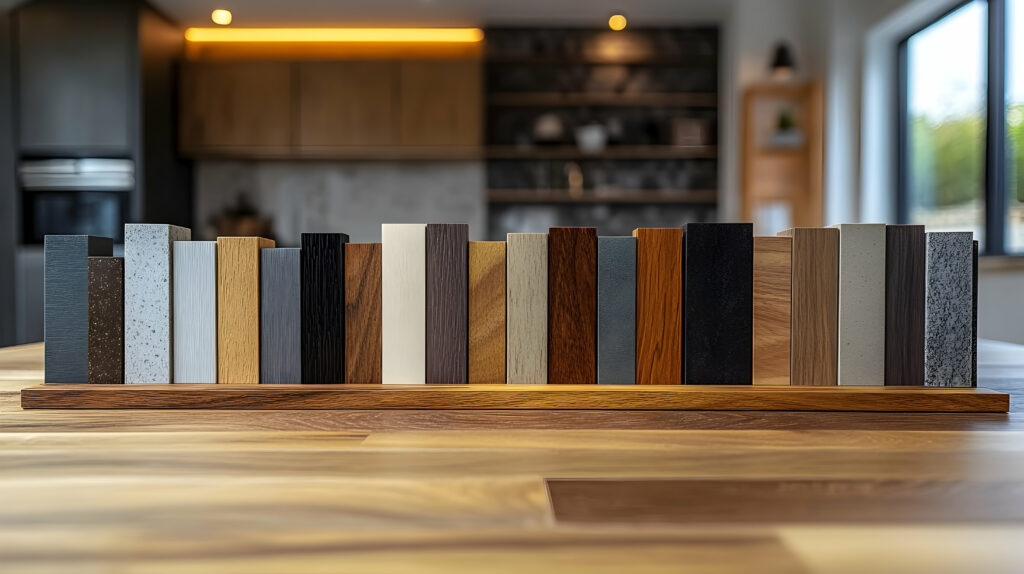It’s easy to spot a great kitchen, but what’s harder to see is how well it works. A kitchen that works well is shaped by the small decisions that make everyday tasks feel easier. And more often than not, that starts with the cabinets. It’s no surprise that in a 2024 survey, nearly a third of homeowners said they had hired or planned to hire a cabinet maker during their kitchen remodel. (1)
When you’re building your own cabinets, smart storage could mean the difference between a kitchen that looks nice and one that actually lives well. The secret lies in planning around your space, habits, and cooking style. Think about how you move through your kitchen day to day, and design storage that makes those moments easier.
Design Around Your Habits, Not the Floor Plan
Before you start cutting wood or shopping for hinges, take a close look at how your kitchen works. Where do things pile up? What always feels out of reach? Which drawers are a mess, no matter how many times you organize them? But don’t rush into sketching the layout, too. Take a few days and pay attention to what’s working and what isn’t.
Consider your cooking habits, too. If you prep in the same corner every night, make sure the tools you use live nearby. If your cooking style leans toward quick meals, prioritize access over deep storage. The more specific you are about your daily needs, the easier it is to build a custom kitchen that feels effortless once it’s in place.
Remember, you’re building something that fits how you move through the space. So, get clear on what your kitchen needs to do for you.
Build Cabinets That Do More Than Hide Things
Cabinet space should do more than hide things. The best storage makes life easier without you noticing. So, instead of deep shelves that can quickly become cluttered, think about cabinet drawers that pull all the way out. You’ll see what you have, and nothing will get lost in the back.
Corners don’t have to be wasted, too. Consider installing a swing-out shelf or rotating tray so the space gets used instead of forgotten. Narrow gaps between kitchen appliances or walls can also hold slide-out racks for baking trays, cutting boards, or cleaning supplies. It’s often the small fixes that add the most value.
Another idea is to group storage by task. For instance, keep knives and prep tools near the cutting area. Then, store pots, pans, and utensils close to the stove. When storage is in the right spot, everything feels easier without you thinking about it.
Pick Materials That Feel Right Day to Day

There’s no point in building custom cabinets if they don’t hold up, but that doesn’t mean everything has to be high-gloss or high-budget to look good. Solid hardwood drawer fronts, quality plywood boxes, and reliable drawer glides can give your kitchen that solid, lasting feel. These are the parts you touch every day. So, they should feel strong and smooth, not delicate or cheap.
That might explain why 72% of homeowners still choose solid wood for new kitchen cabinets. Shaker remains the most popular cabinet door style by far, with 61% preferring it over flat-panel cabinet designs at 22% and raised-panel at 12%. The classics stick around for a reason; they’re built to last and easy to live with. (2)
If you like painted cabinets, go with a color that fits the space. Natural wood, for instance, is a great choice if you want something that brings in warmth and texture. Soft shades like taupe, seafoam green, creamy white, or pale gray keep things light without feeling cold, while bolder tones like deep blue or forest green add depth without overwhelming the room. You can also consider a warm, buttery yellow or muted sage to bring a sense of comfort, especially in kitchens that don’t get much natural light. (3)
Leave Room for What Might Come Next
The way you use the space now might not be the same five years from today. So, consider adjustable shelves and flexible storage so you can shift things around as life changes. It’s a simple way to keep the space useful over time.
Make room for future features, even if you’re not ready to add them yet. A built-in microwave shelf, an outlet tucked behind a lower cabinet, or a small nook for a coffee setup can be added later without having to redo anything. These quiet additions won’t be noticed right away, but you’ll be glad they’re there when you need them.
And don’t feel like every wall needs to be covered in built-in cabinets. Leaving some space open can actually make the kitchen feel more balanced. You can always add floating shelves or storage pieces down the line if it makes sense. Sometimes, letting the room breathe is the smartest design decision you’ll make.
Closing Thoughts
A kitchen doesn’t need to impress anyone but you. When you open a drawer and everything’s where it should be, or when you can cook dinner without stopping to dig through clutter, that’s when you know you got it right. Building custom cabinets takes time, but when the space starts to reflect how you live, it’s worth every bit of it.
References:
- “Professionals hired to help with kitchen renovations in the United States in 2024/2025,” Source: https://www.statista.com/statistics/377312/professionals-hired-to-help-with-kitchen-remodels-in-the-us/
- “See the Top Trends in Kitchen Cabinets, Countertops and More,” Source: https://www.houzz.com/magazine/see-the-top-trends-in-kitchen-cabinets-countertops-and-more-stsetivw-vs~179668579
- “52 Pretty Kitchen Paint Color Ideas for Your Next Room Makeover,” Source: https://www.countryliving.com/home-design/decorating-ideas/advice/g1704/kitchen-paint-color-ideas/


